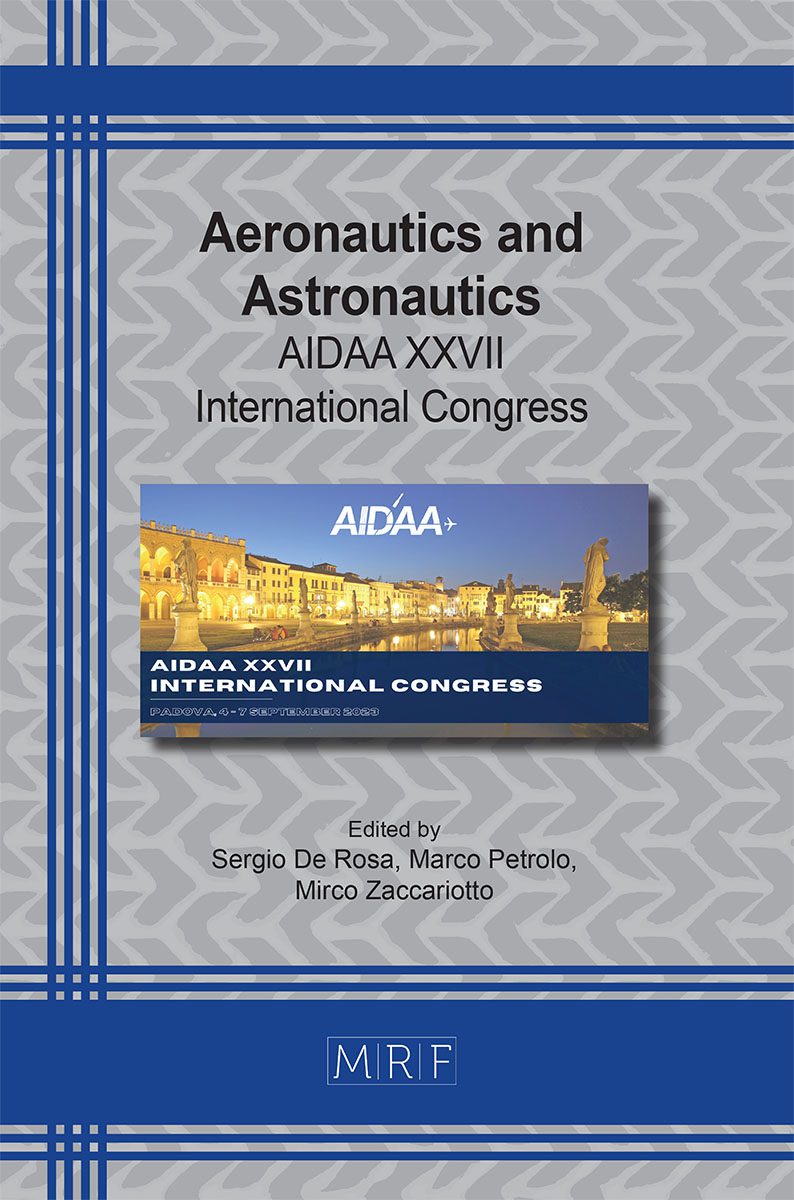Space object identification and correlation through AI-aided light curve feature extraction
Chiara Bertolini, Riccardo Cipollone, Andrea De Vittori, Pierluigi Di Lizia, Mauro Massari
download PDFAbstract. With the constant growth of objects in orbit, the monitoring and cataloging of space population is essential. Light curves obtained from ground stations support this point, providing valuable information about the observed objects. The idea of using them to identify an object through correlation with a catalogued reference takes hold from their wide availability. This article focuses on the development of a tool for the analysis and correlation of two light curves, ARIEL. This tool is built through neural networks and declined in three strategies, each with its own goal: ROGUE, LINDEN and SIERRA. The light curves were retrieved via the database managed by the Mini-MegaTORTORA observatory and filtered using the Savitzky-Golay filter.
Keywords
Light Curves, Neural Networks, Correlation
Published online 11/1/2023, 5 pages
Copyright © 2023 by the author(s)
Published under license by Materials Research Forum LLC., Millersville PA, USA
Citation: Chiara Bertolini, Riccardo Cipollone, Andrea De Vittori, Pierluigi Di Lizia, Mauro Massari, Space object identification and correlation through AI-aided light curve feature extraction, Materials Research Proceedings, Vol. 37, pp 499-503, 2023
DOI: https://doi.org/10.21741/9781644902813-109
The article was published as article 109 of the book Aeronautics and Astronautics
![]() Content from this work may be used under the terms of the Creative Commons Attribution 3.0 license. Any further distribution of this work must maintain attribution to the author(s) and the title of the work, journal citation and DOI.
Content from this work may be used under the terms of the Creative Commons Attribution 3.0 license. Any further distribution of this work must maintain attribution to the author(s) and the title of the work, journal citation and DOI.
References
[1] ESA Space Debris Office, “ESA annual space environment report,” Tech. Rep. 6, Euro- pean Space Agency, Darmstadt, Germany, April 2022.
[2] EU SST, “European space surveillance and tracking,” 2016. https://www.eusst.eu.
[3] Montaruli, Marco Felice & Facchini, Luca & Di Lizia, Pierluigi & Massari, Mauro & Pupillo, Giuseppe & Bianchi, Germano & Naldi, Giovanni. (2022). Adaptive track estimation on a radar array system for space surveillance. Acta Astronautica. 198. https://doi.org/10.1016/j.actaastro.2022.05.051
[4] B. Bradley and P. Axelrad, “Lightcurve in- version for shape estimation of GEO objects from space-based sensors,” ISSFD, 2014.
[5] R. Linares and R. Furfaro, “Space object classification using deep convolutional neural networks,” IEEE, 2016.
[6] E. Kerr, G. Falco, N. Maric, D. Petit, P. Talon, E. Geistere Petersen, C. Dorn, S. Eves, N. Sánchez-Ortiz, R. Dominguez Gonzalez, and J. Nomen-Torres, “Light curves for GEO object characterisation,” (Darmstadt, Germany), ESA, ESA Space Debris Office, 4 2021. Proc. 8th European Conference on Space Debris.
[7] S. Karpov, E. Katkova, G. Beskin, A. Biryukov, S. Bondar, E. Davydov, E. Ivanov, A. Perkov, and V. Sasyuk, “Massive photometry of low altitude artificial satellites on Mini-Mega Tortora,” 2015. Database: https://mmt.favor2.info/satellites.
[8] N. Gallagher, “Savitzky-Golay smoothing and differentiation filter,” 2020. https://eigenvector.com/wp-content/ uploads/2020/01/SavitzkyGolay.pdf.
[9] H. Essam and S. Valdarrama, “Image similarity estimation using a Siamese Network with a Triplet loss,” 2021. https://keras. io/examples/vision/siamese_network/.












